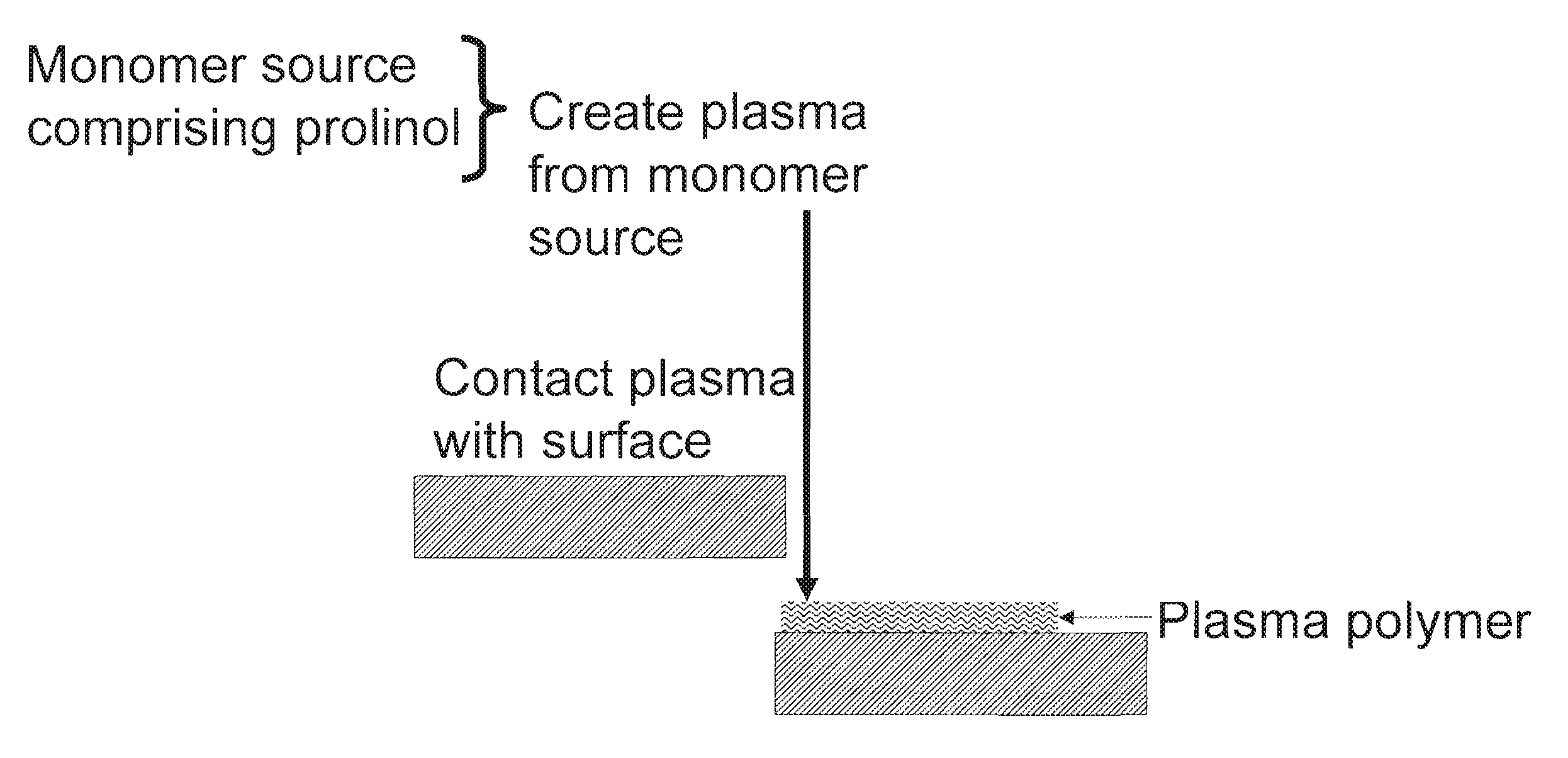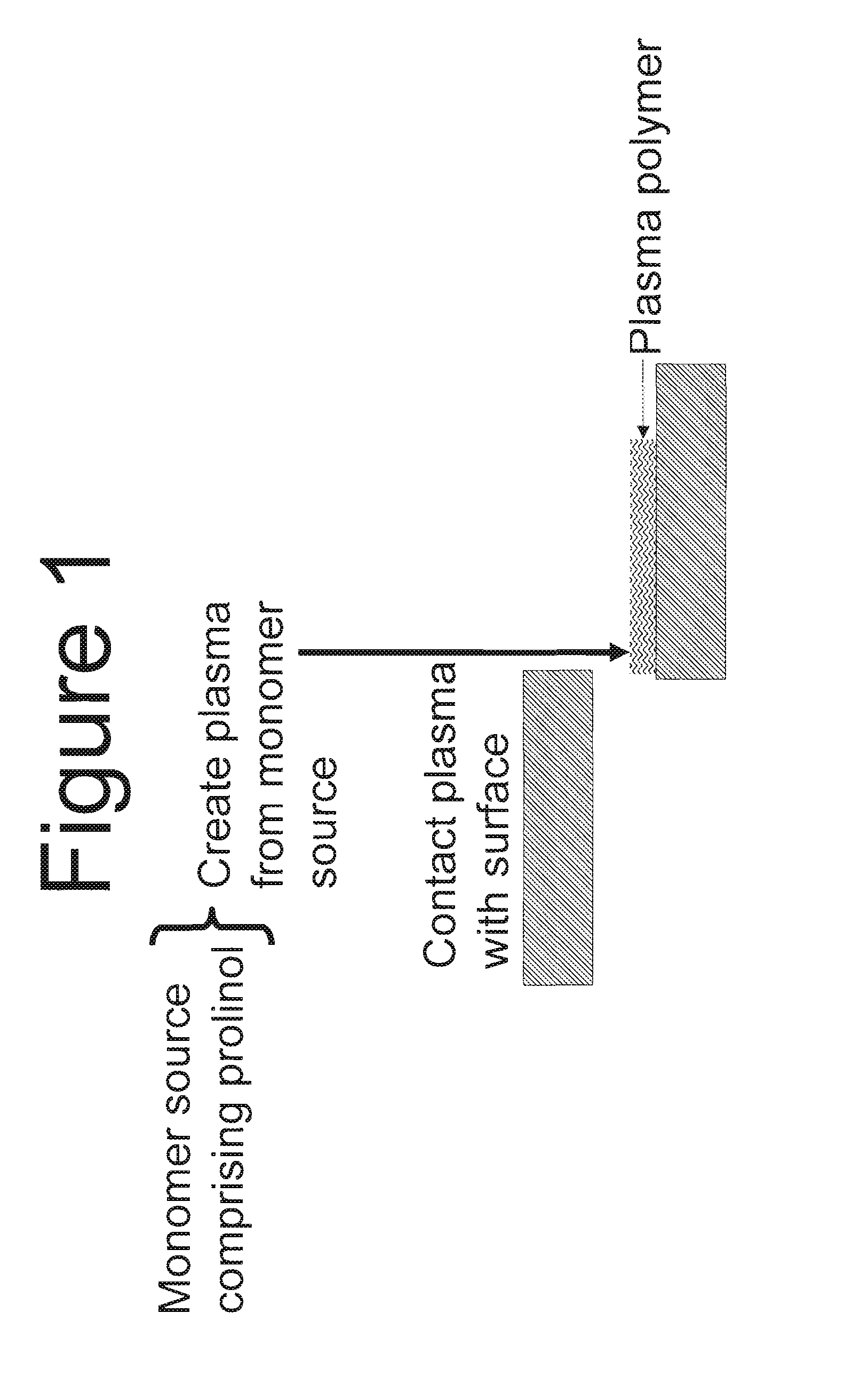Methods for producing synthetic surfaces that mimic collagen coated surfaces for cell cultue
a synthetic surface and collagen coating technology, applied in the field of synthetic surface production that mimics collagen coating surfaces, can solve the problems of high cost, difficult large-scale manufacturing, and difficult large-scale manufacturing, and achieve the effect of reducing cost and/or issues, and being able to manufacture large-scal
- Summary
- Abstract
- Description
- Claims
- Application Information
AI Technical Summary
Benefits of technology
Problems solved by technology
Method used
Image
Examples
example a
[0027]To explore the ability of the prolinol-coated surface to mimic one or more functional characteristics of a collagen coated surface, human hepatocytes were seeded and monitored on both collagen-coated and prolinol-coated surfaces under the same culture conditions. In brief, cryopreserved hepatocytes were removed from liquid nitrogen storage and immediately placed in a 37° C. waterbath until the cells were nearly thawed. The contents were then transferred to 50 mls of pre-warmed ISOM's Seeding Media. The tubes were centrifuged in a Low-speed centrifuge at 50×g for 5 minutes at room temperature. The supernatant fluid was aspirated and discarded. The cell pellet was resuspended in 1-2 mLs of ISOM's Seeding Media. Cells were counted and then diluted to a density of 106 cells / ml ISOM's Seeding Media. Cells were seeded at a density of 4×105 cells / well (i.e., a volume of 400 μL / well of 106 cells / mL) onto a 24-well plate. Specifically, a prolinol coated or Collagen Type I coated plate....
PUM
| Property | Measurement | Unit |
|---|---|---|
| RF power | aaaaa | aaaaa |
| RF power | aaaaa | aaaaa |
| volume | aaaaa | aaaaa |
Abstract
Description
Claims
Application Information
 Login to View More
Login to View More - R&D
- Intellectual Property
- Life Sciences
- Materials
- Tech Scout
- Unparalleled Data Quality
- Higher Quality Content
- 60% Fewer Hallucinations
Browse by: Latest US Patents, China's latest patents, Technical Efficacy Thesaurus, Application Domain, Technology Topic, Popular Technical Reports.
© 2025 PatSnap. All rights reserved.Legal|Privacy policy|Modern Slavery Act Transparency Statement|Sitemap|About US| Contact US: help@patsnap.com


